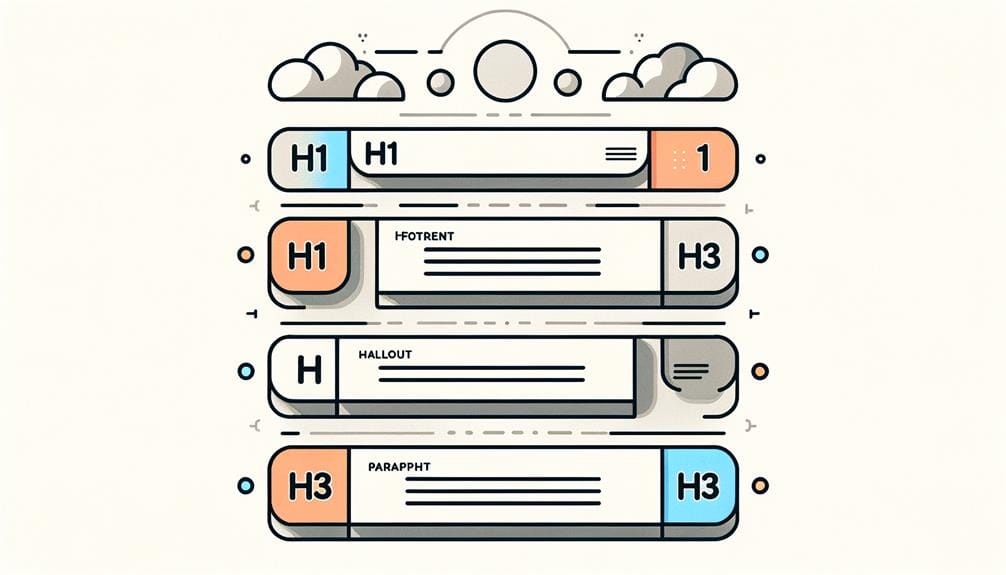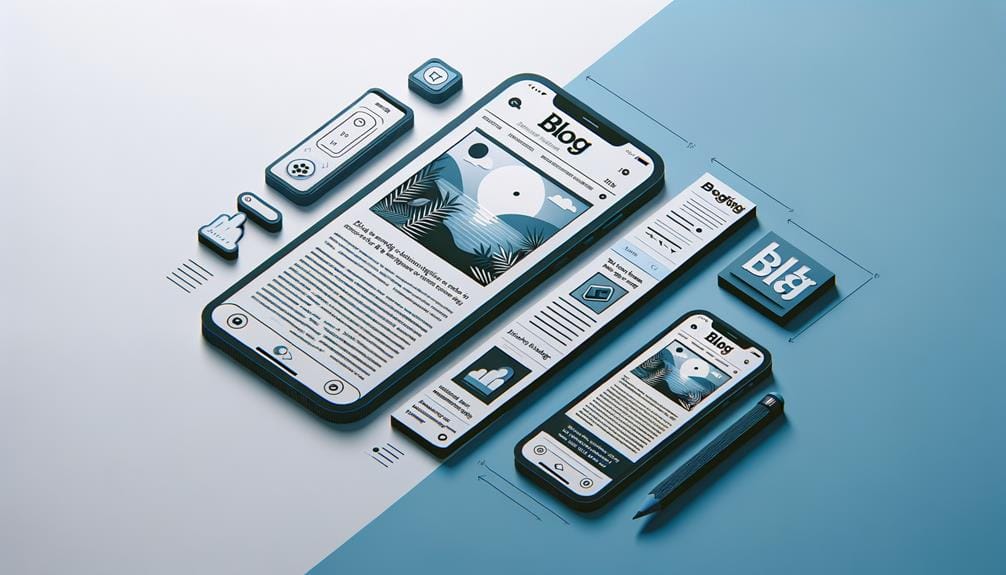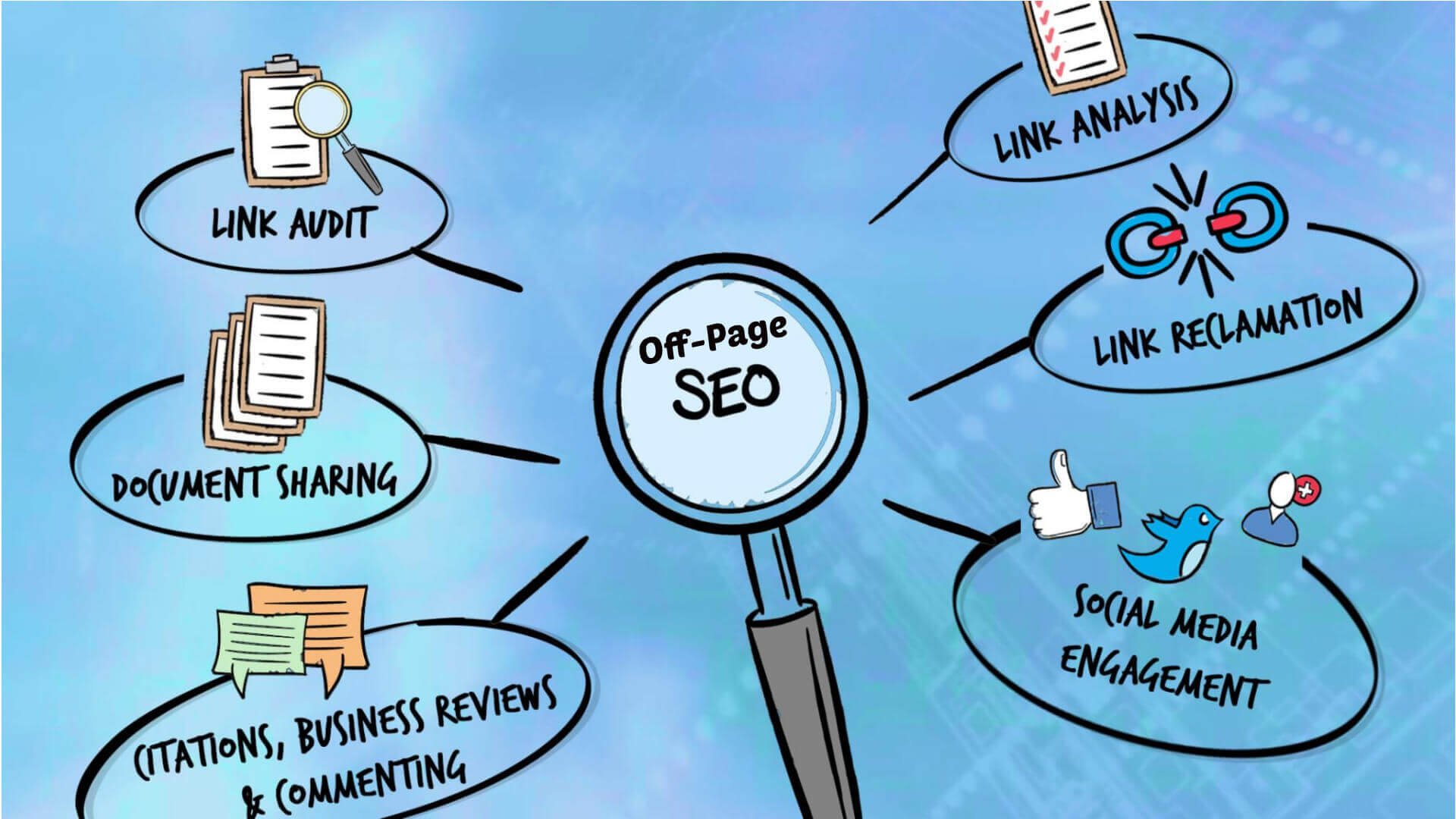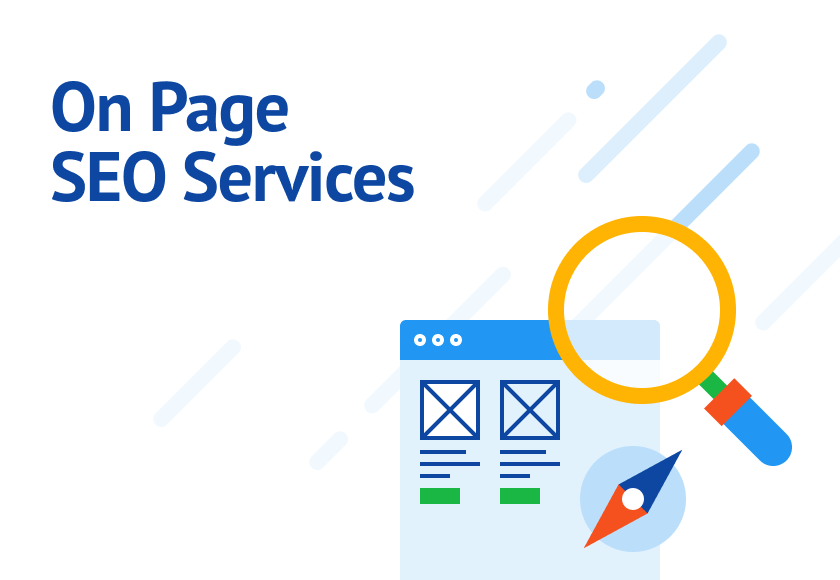To boost your blog post’s visibility and drive more traffic, you’ll want to incorporate essential on-page SEO techniques. Start by crafting high-quality, informative content that’s optimized with keyword research tools, meta descriptions, and internal linking. Don’t forget to optimize your title tags, header tags, and image content to improve search engine rankings. A well-structured page with header tags and a clear meta description will also enhance user experience and increase engagement. By implementing these techniques, you’ll be well on your way to improving your search engine rankings and online presence – and that’s just the beginning of maximizing your blog post’s potential.
Content Elements for SEO Success
What makes your blog post content truly SEO-friendly, and how can you guarantee that it resonates with both your target audience and search engines?
To start, you need to focus on creating high-quality content that’s informative, engaging, and unique. This is essential for on-page SEO success.
You’ll want to use keyword research tools to identify the most relevant keywords and phrases for your content, and then strategically place them throughout your blog post.
Don’t forget to optimize your meta description and use internal linking to help search engines understand the hierarchy of your content.
Image optimization is also key, as it enhances search engine visibility and improves the overall user experience. Use relevant alt text and filenames for your images, and make sure they’re compressed to reduce page load times.
Heading tags are also important, as they improve readability and help search engines understand the structure of your content.
Finally, focus on creating content that aligns with search intent, and use internal links to guide users to related content.
HTML Elements and Tags

Now that you’ve crafted high-quality content, it’s time to focus on the HTML elements that help search engines understand and index your blog post effectively.
You’ll want to optimize your title tags, meta descriptions, and header tags to give your content the best chance of ranking well and driving traffic to your site.
Optimizing Title Tags
To maximize your blog post’s visibility in search engine results, you need to craft a well-optimized title tag that accurately reflects the content and includes relevant keywords.
When you optimize your title tags, you’re not just improving your search engine rankings; you’re also setting user expectations and enticing readers to click through to your webpage content.
A well-crafted title tag should be concise, around 50-60 characters, and make a lasting impression to increase click-through rates.
Meta Description Matters
Crafting an engaging meta description is essential, as it not only summarizes your web page’s content but also influences click-through rates and ultimately drives traffic to your blog post. As an HTML element, your meta description should provide a concise and accurate summary of your content, making it easier for users to determine what your page is about.
In search engine results, it appears directly under the page title, making it a vital aspect of your SEO strategy.
When writing your meta description, keep in mind that Google often truncates it around 155-160 characters, so make sure to keep it concise and within this limit. Include relevant keywords to improve your SEO, but prioritize writing an engaging description that resonates with your target audience.
A well-crafted meta description can notably improve your click-through rates, user engagement, and ultimately drive more traffic to your blog post. By investing time and effort into writing a captivating meta description, you can boost your online visibility and increase your chances of ranking higher in search engine results. Remember, your meta description is often the first thing users see, so make it count!
Header Tag Hierarchy
Organizing your blog post with a clear header tag hierarchy is essential for both search engines and human readers, as it helps to establish a logical structure and improve overall readability. Header tags, ranging from H1 to H6, provide a hierarchical structure to your content, with H1 being the most important and H6 being the least. By using these tags, you’re creating a clear content hierarchy that helps search engines understand the flow of your content.
| Header Tag | Content Hierarchy |
|---|---|
| H1 | Main Topic or Title |
| H2 | Subtopics or Key Takeaways |
| H3 | Supporting Points or Analysis |
| H4, H5, H6 | Additional Details or Less Important Information |
Writing Unique and Helpful Content

Now that you’ve optimized your blog post’s HTML elements, it’s time to focus on crafting unique and helpful content that resonates with your target audience.
You’ll want to create engaging content that addresses the needs and interests of your readers, while also showcasing your expertise and authority in your niche.
Creating Engaging Content
When you sit down to write a blog post, your goal should be to create content that not only resonates with your audience but also provides value and answers their most pressing questions. To craft engaging content, focus on providing valuable information that addresses the needs of your audience. This approach helps build trust and can lead to higher engagement and conversions.
| Why Engaging Content Matters | The Benefits |
|---|---|
| Provides unique insights | Stands out in search engine results, attracting more organic traffic |
| Addresses audience needs | Establishes the blog as an authority in its niche |
| Incorporates storytelling and visuals | Keeps readers interested and invested |
| Offers valuable information | Builds trust with the audience, leading to higher engagement |
| Includes interactive elements | Encourages audience participation and sharing |
Content Relevance Matters
To make your blog posts truly effective, you need to focus on crafting unique and helpful content that resonates with your target audience and sets you apart from competitors. This means creating content that solves a problem or provides valuable information, which can lead to increased user engagement and shares.
Search engines value relevant and informative content, so it can positively impact your blog’s SEO performance. When your content stands out, you establish your blog as a go-to resource in your niche.
Writing for Readers
Crafting engaging content that speaks directly to your audience’s needs and concerns is essential for grabbing their attention and establishing a loyal following. When you write for your readers, you’re not just filling a page with words – you’re building trust and establishing your authority in the niche. By providing valuable content and unique insights, you’re giving your audience a reason to keep coming back to your blog.
Here’s how writing for readers can benefit your blog:
| Benefits | How It Works | Results |
|---|---|---|
| Establish Authority | Provide valuable insights and information | Increased trust and loyalty |
| Drive Organic Traffic | Create content that solves problems or answers questions | Improved search engine rankings |
| Increase Engagement | Write engaging, unique, and informative content | More shares and comments |
| Stand Out from Competition | Offer a fresh perspective or unique voice | Increased visibility and recognition |
| Build Loyal Following | Focus on readers’ needs and concerns | Long-term audience loyalty |
Optimizing Image and Video Content

Optimizing your image and video content is an essential step in enhancing the overall search engine visibility and user experience of your blog posts.
By incorporating image optimization techniques, such as descriptive alt text and optimized image size and format, you can improve your search engine rankings and provide a better user experience.
Don’t forget about video content optimization – using relevant keywords in video titles, descriptions, and tags can boost your visibility on search engines like Google and YouTube.
Crafting Keyword-Rich Title Tags

By incorporating your target keywords into the title tag, you immediately convey the main topic and focus of your blog post to both search engines and potential readers. Crafting keyword-rich title tags is essential for on-page SEO as they’re the first thing users see in search results.
When you include your target keywords in the title tag, you’re helping search engines understand the relevance of your content to the user’s search query. This, in turn, can improve the visibility and click-through rate of your blog post.
A well-crafted keyword-rich title tag should be concise, descriptive, and compelling to attract clicks from search engine users. By doing so, you’re not only improving your on-page SEO but also increasing the chances of driving more traffic to your blog post.
Structuring Pages With Header Tags

Once you’ve created a compelling title tag that showcases your blog post’s focus, it’s time to think about how you’ll organize the content itself, and that’s where header tags come into play, helping you structure your page in a way that’s easy for both readers and search engines to follow.
With header tags (H1, H2, H3, etc.), you can organize your content hierarchically, making it easier for readers to scan and find the information they’re looking for. Properly using header tags also improves readability and user experience, leading to longer on-page engagement and potentially lower bounce rates.
Meta Description and Snippet Text

Your meta description is more than just a summary of your blog post – it’s an essential sales pitch that determines whether search engine users click through to your page or pass you by. A well-crafted meta description can improve your click-through rate, increase visibility, and drive more traffic to your page. To maximize its potential, keep it concise, ideally between 150-160 characters, and include relevant keywords to enhance your on-page SEO.
| Best Practices | Why It Matters |
|---|---|
| Keep it concise (150-160 characters) | Guarantees full visibility in search results |
| Include relevant keywords | Enhances page visibility and click-through rate |
| Make it descriptive and compelling | Entices users to click and boosts user engagement |
Building Strategic Internal Links

To elevate your on-page SEO to the next level, you need to create a clear pathway for both users and search engines to follow, and that’s where strategic internal linking comes in. By linking to other relevant pages on your website, you’re not only improving website navigation and user experience but also helping search engines understand the structure and hierarchy of your site. This, in turn, enhances your overall SEO.
Strategic placement of internal links can increase the time visitors spend on your site, reduce bounce rates, and distribute link equity throughout your website. This can greatly enhance the authority of important pages, showcasing the depth and breadth of your content.
By guiding visitors to relevant content, you’re encouraging them to explore more of your website, which can lead to increased engagement and conversion. As you build strategic internal links, you’re creating a clear pathway for users and search engines to follow, ultimately driving more traffic and authority to your site.
Mobile-Friendly and Responsive Design

How does your blog post’s design measure up when it’s viewed on a smartphone or tablet, and is it truly optimized for the increasingly mobile-driven web?
With mobile traffic accounting for over 50% of web traffic globally, having a mobile-friendly design is no longer a nice-to-have, but a must-have.
You need to guarantee that your blog posts are accessible and visually appealing on various devices, which is where responsive design comes in.
To Recap
You’ve built a solid SEO foundation for your blog posts, and now it’s time to reap the rewards.
Think of your optimized content as a beacon, shining bright for search engines to find.
With header tags as your roadmap, meta descriptions as your sales pitch, and internal links as your networking connections, you’ve set yourself up for success.
Keep refining your strategy, and your online presence will continue to flourish, attracting readers like a magnet.








